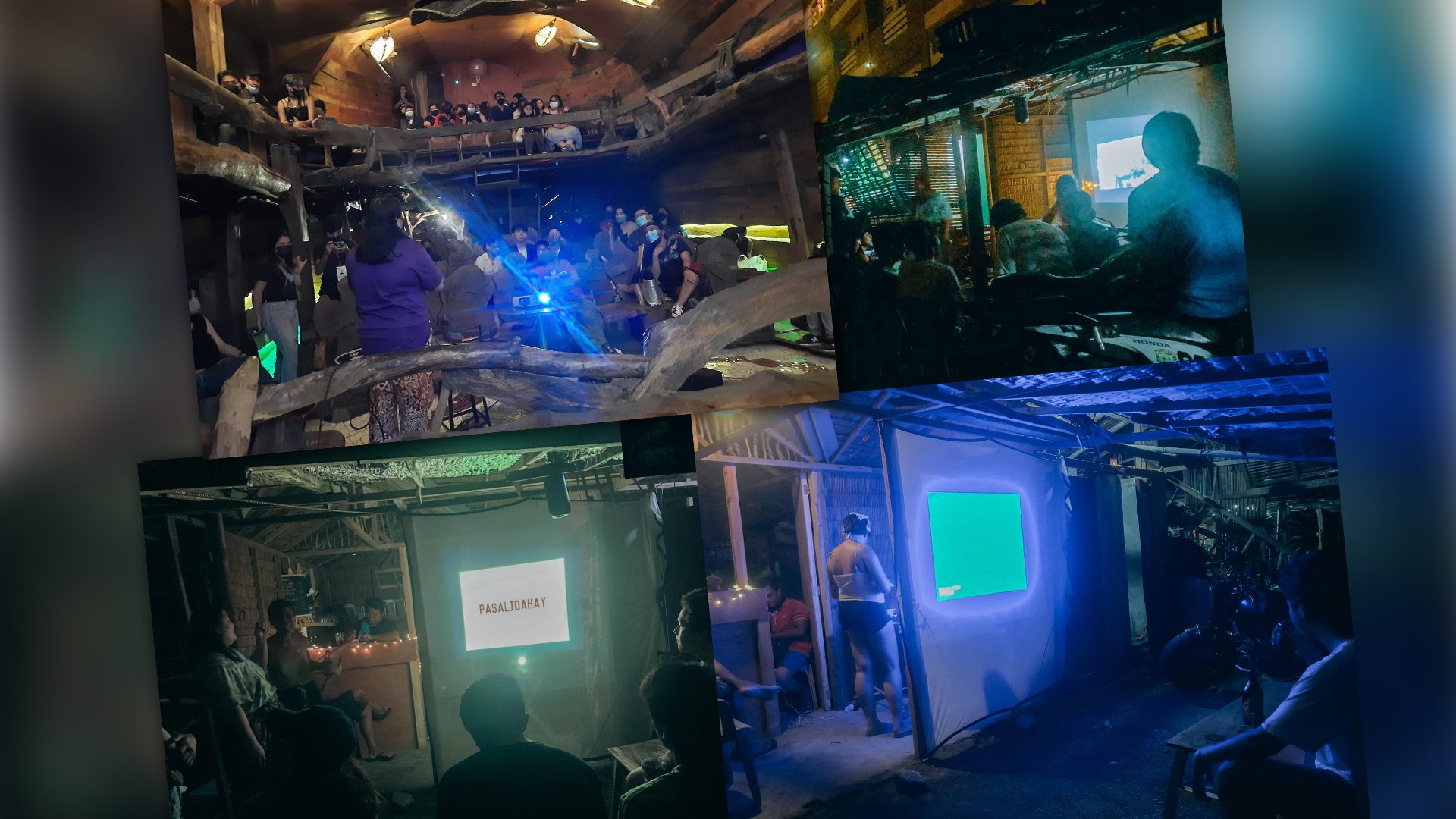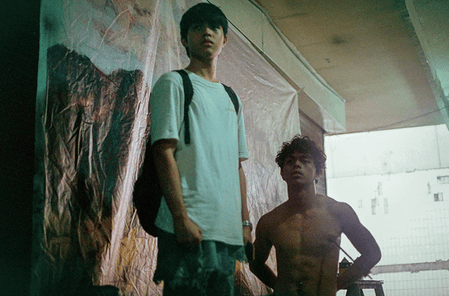SUMMARY
This is AI generated summarization, which may have errors. For context, always refer to the full article.

These days, local cinema struggles to be seen. But even prior to the virus, filmmakers have stood on creaky ladders — working on shoestring budgets, tight schedules, questionable safety protocols and working conditions, etc. Whatever makes it through the process struggles to find a home in theaters and streaming platforms dominated by international films with marketing budgets larger than all local production budgets combined. It is difficult to be creative when your survival is on the line.
Film festivals have been one of the few events that still hold space for Filipino work. Despite the struggles in the past two years, these spaces have continued to introduce some of the country’s most exciting work — especially from young, emerging talents. The continued existence of these festivals, despite the threat of financial collapse and teetering audience numbers, is a bellwether for good news: there are still stories to be told, storytellers willing to tell them, and spaces that hold these gatherings.
Of these spaces, Cinema Rehiyon — the flagship project of the National Commission for Culture and the Arts’ (NCCA) National Committee on Cinema — has been one of the most vibrant and vital. Created in 2008, Cinema Rehiyon has been crucial in challenging the Manila-centric notion of film production, exhibition, and criticism. As UP Film Institute director Patrick Campos and film programmer Katrina Tan have previously pointed out in their writing, the festival has been a way through which regional filmmaking may be celebrated in its complexities by centering the so-called peripheries.
With Mindanao as this year’s host, festival director Angely Chi leads the festival through its first hybrid and most expansive format yet — combining free virtual and televised screenings with on-the-ground film viewings in selected areas.
Leveraging the peripheries
Apart from reviving local cinematheques in Davao, Negros, Manila, Nabunturan, and Iloilo, this year’s Cinema Rehiyon must be commended for leveraging alternative screening spaces. By convening at museums, parks, restaurants, schools, and even basketball courts and roadsides, Cinema Rehiyon challenges the notions of the theater as a sacred space and bursts the consumerist bubble around theater-centered distribution and exhibition, which has its roots in our growing “mall culture.” Outdoor screenings and alternative cinema spaces engenders questions about “cultural segregation and urban cinephilia,” as previously expounded upon by filmmaker and researcher Sezen Kayhan Müldür.
Community-centered screenings enable the creation of film programs that are tailor-fit to a specific audience’s interests and needs and are made easier by partnerships with institutions with on-the-ground knowledge of this target audience such as existing film festivals (i.e. Montañosa Film Festival), organizations (i.e. Kwago and Project Red Ribbon), and even schools (i.e. Kalinga State University). Talkbacks were organized to talk about the material and sociopolitical conditions that affect what stories are told and how. The most interesting of the online talkbacks are the ones centered around “Animation in the Regions,” on “Resistance in Cinema and Cinema as Resistance,” and “Film Workers Rights and Filmmaking During the Pandemic.”
But with around 100 entries in this year’s film festival from all around the Philippines and other Asia Pacific regions, the sheer volume of the program is overwhelming. While the individual short films vary in quality — with some truly exciting and challenging films, while others are saved by their sheer sentimentality — these are strengthened by the film programming of Jay Rosas, Juliet Cuizon, and Katrina Tan, who take care in creating thematic and contextual pockets for audiences to gain more from the sum of their parts.
The most widely viewed of this year’s films is the restored version of Lino Brocka’s Bayan Ko: Kapit sa Patalim. But standouts from these film sets are the “Tinguha: A Mindanao Short Films Retrospective” programmed by Rosas (which features Teng Mangansakan’s House Under the Crescent Moon and Sheron Dayoc’s Angan-Angan); Katrina Tan’s “State of Violence and Activism” (which features Rivers of Tears and Rage by Maricon C. Montajes) and “Quiet Rage” (which features Chicken Ligaya’s Ñawa, Mauli-uli Na, Maria Estela Paiso’s Ampangabagat Nin Talakba Ha Likol, and JT Trinidad’s Like People, They Change); Juliet Cuizon’s “Kadautan” (which features Anim Na Taon by Eric Bico and Days of the New by Keith Deligero) and “Kuan” (which features Kukay Zinampan’s Nang Maglublob Ako sa Isang Mangkok ng Liwanag and Mary Andrea Palmares’ Gutab). The Asia Pacific Short Film Program also contains several excellent films including Floatland by Treepatr Prapassorn and Dalawang Panahon by Mark Sherwin Maestro.
Virtual space as afterthought
Despite the quantity, quality, and reach, discussion around the festival (at least online) is abysmal, especially when compared to previous virtual or in-person screenings. The lack of an audience can be tied to growing fatigue around virtual exhibitions and “content fatigue,” a problem encountered by film festivals around the world. But specifically for the Philippines, it is much more difficult to make a dent in the online sphere given how political campaigns and anxieties about the upcoming national elections populate social media. These push everything that isn’t Euphoria or a Marvel film to the fringes of cultural conversation.
But this does not excuse the failings of the festival at taking advantage of the virtual space. With lackluster marketing, limited partnerships with schools, and the laborious task of navigating the platform, the online screenings seem more like an afterthought compared to the rest of the investment. The interface of the NCCA’s Vimeo streaming site only enables single-viewing of each of the films, requiring a code each time a film wants to be viewed. Dumped onto the site in alphabetical order without a way to search for the film’s titles or a way to organize and view them according to their film sets, the technology betrays the careful curation and programming decisions. And in the age of inattention (or even just slow internet), the reality is that accessible mediocrity is easier to watch than excellent work that requires effort.
It’s not as if stringing these films together is impossible. Partner organization Pasalidahay strung together films from this year’s selection as 60-90-minute features and screened them on Facebook. Other regional and student film festivals have migrated to other viewing platforms such as the FDCP channel, MOOV, and even Discord. If the festival continues to be hybrid (I hope all festivals do, honestly), one hopes that the NCCA acknowledges the difference between availability and accessibility and learns to bridge that gap.
Changing landscapes
But more than this, one cannot help but feel as if Cinema Rehiyon is unidirectional with its audience engagement, failing to provide active avenues of engaging with the film festival and the people behind it.
IndieWire’s Eric Kohn wrote about the opportunities at regional festivals in the US such as the “Filmmakers Taking Charge” — a day-long event “for filmmakers largely working outside of the studio system to swap intel.” Other non-competitive festivals such as the Toronto International Film Festival have created ways to acknowledge the audience’s participation in the festival by handing out audience awards. More recently, top-tier festivals such as Rotterdam and Sundance have created opportunities for festival goers to interact with one another in a virtual space such as Discord and GatherTown.
Prior to the pandemic, film festivals were limited by geographical constraints. But since then, more regional film festivals such as Binisaya and Pelikultura have been accessible to the entire country as they have adopted a virtual or a hybrid format. Given this shift in access, questions now arise about the redundancy of Cinema Rehiyon, its overlaps with existing festivals, and its changing role in shaping cinema in the Philippines. To survive as a festival, it must balance adapting with its audience while also being one step ahead of it.
Will it respond to these questions or will it leave them unanswered? Only time can tell. – Rappler.com
Cinema Rehiyon is extended until April 30, 2022. Films are available via NCCA’s Vimeo, on Philippine free TV via ETC, and in-person screenings.
Add a comment
How does this make you feel?


There are no comments yet. Add your comment to start the conversation.